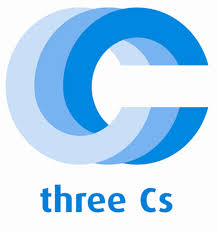The 3 Cs Of Education
 The more, the longer I’m involved in education, the more clearly I’m able to see the forest for the trees. Truly. It’s something about just being there, mucking about, taking in loads of information daily that builds a soul inside oneself, the teacher. Not tooting my horn too loud – I’m sure I’m still off the mark a lot of the time but as I march along this road of learning, I’m more often on the mark.
The more, the longer I’m involved in education, the more clearly I’m able to see the forest for the trees. Truly. It’s something about just being there, mucking about, taking in loads of information daily that builds a soul inside oneself, the teacher. Not tooting my horn too loud – I’m sure I’m still off the mark a lot of the time but as I march along this road of learning, I’m more often on the mark.
When it comes to the broader picture of technology in education (and I do detest even using that phrase – what isn’t technology? Isn’t technology anything that enables learning – pencils, paper, our tongue, neurons, ipads and igloos?), when it comes to ed tech – I see 3 very important foci that all institutions, all teachers need consider and make part of their curriculums, if they are to live up to their potential. And all 3 of these overlap into each other, compliment each other and are not fully themselves unless the other two are enacted alongside.
1. Communication
The classroom should no longer be a lonely place, isolated when the teacher closes the class door. Used to be but shouldn’t be now. Students can connect with other classrooms, other students, other teachers – the world is their classroom. This broadening of experience that communicative technologies allow (think just the internet, think skype, think whatsup, think FB) really is important in helping us create citizens of the world. Living local but thinking global.
2. Collaboration
Used to be that a student was given an assignment, an essay topic and they then had in isolation, individually, come up with the answers, learn, complete the task. Not anymore. Students can go right to the experts, students can learn from each other, across time and place. If google has got all the answers, education is no longer about just knowing but rather, growing … meaning, working with others on projects, collaborating and using your specific talents to their best. Technology now allows students to work together, to communicate synchronously, to be more than just a vessel of knowing but a living river, to truly “do” along with “know”. All courses, all education should follow a praxis – an activity engaged in by free men.
3. Creation
Project based learning, Task based learning, the “Maker Movement” – are all just a few of the signs that through technology, students will not be studying separately from creating a product. Purposeful learning we can call it. Students can now not just write an essay for their teacher but can write for a broad audience on the web – publish youtube video tutorials etc…. Schooling can be for real, purposeful ends now – no longer need it be just to fill in the blanks and be something done to get a mark on a test. Engaging students with real projects, in real life is now possible. Technology allows students to reach out to the world and make a difference by creating something, unique, worthy.
So to end, I ask, “How are you putting these principles into place at your school?”










Great article and sound advice. These are approaches/strategies I typically use and would encourage even when limited technology is not readily available. Yes, there are still environments where technology has little presence, you’d be surprised. I think a lot of it comes down to the creativity of the teacher. There is no doubt that technology allows for greater engagement, and valuable learning experiences to be explored. I particularly like its applicability to inquiry-based learning which empowers students, and takes them away from their traditional teacher directed classes. They learn to be learners.